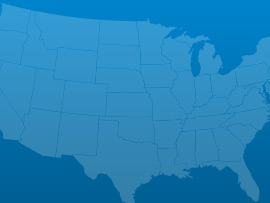Vermont ranks 28th in the nation in state highway performance and cost effectiveness, moving up 14 spots from 42nd in the previous year. This was due largely to the influx of emergency funding that Vermont received in the aftermath of Tropical Storm Irene which significantly impacted Vermont’s roads. To continue making improvements at the same rate since 2011, VTRANS estimates a funding need of $700 million per year, at least through 2018. Positively, state legislators and the Governor passed the largest investment ever made in the state’s transportation infrastructure which contains $685.7 million in transportation funding for 2015. The 2015 Transportation package provides $115.7 million for paving, $108.7 million for town highway programs, $50 million for maintaining and improving roadways, and $13.3 million for highway safety and traffic operations. Vermont has also made progress on road safety with its Strategic Highway Safety Plan cutting road fatalities by nearly half since 2006.
 Bridges
Bridges Dams
Dams Drinking Water
Drinking Water Roads
Roads Solid Waste
Solid Waste Wastewater
WastewaterA: Exceptional, B: Good, C: Mediocre, D: Poor, F: Failing, ?: Incomplete
Each category was evaluated on the basis of capacity, condition, funding, future need, operation and maintenance, public safety, resilience, and innovation
Aviation
12 public-use airports
Bridges
251 of the 2,731 bridges are structurally deficient
Bridges
$29.20 million in bridge funds came from the Federal Highway Bridge Fund in 2011
Dams
78% of the state regulated dams have an Emergency Action Plan
Dams
40 high hazard dams
Drinking Water
$453 million in drinking water infrastructure needs over the next 20 years
Energy
1.829 gigawatt-hours of renewable energy every year, ranking it 39th
Hazardous Waste
11 sites on the National Priorities List
Levees
2 miles of levees
Public Parks
$65.0 million of unmet needs for its parks system
Rail
8 freight railroads covering 590 miles across the state, ranking 44th nationally by mileage
Roads
1,658 of the state’s 14,291 public roads are major roads, and 14% are in poor condition
Roads
$201.0 million a year in costs to motorists from driving on roads in need of repair, which is $379 /yr per motorist
Schools
$326.0 million in estimated school infrastructure funding needs
Transit
2.5 million annual unlinked passenger trips via transit systems including bus, transit, and commuter trains
Wastewater
$218.0 million in wastewater infrastructure needs over the next 20 years

March 03, 2017
As the President’s repeated in his address to Congress his pledge to dramatically increase infrastructure spending to the tune of $1 trillion, various Congressional Committees

March 01, 2017
On Tuesday night, President Trump addressed a joint-session of Congress for the first time in his presidency. Infrastructure was among the many issues he discussed.

February 28, 2017
U.S. motorists set a new record for vehicle miles travelled (VMT) in 2016, driving over 3.2 trillion miles, an increase of 70 billion miles from

February 17, 2017
Romantic dates, the Grammy awards and celebrating black history are not the only milestones of this week; the Oroville dam crisis in California and the